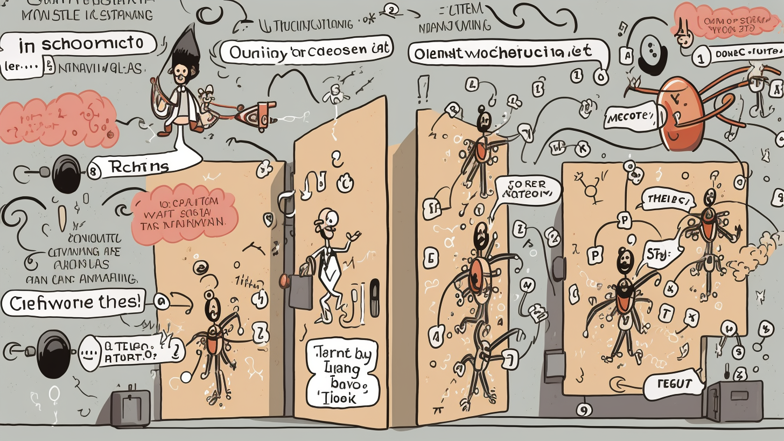
In the world of computing and communication, quantum mechanics is a game-changer that has the potential to revolutionize our understanding of how we process and transmit information. This is precisely where Quantum Information Theory (QIT) comes into play – a branch of quantum mechanics that studies the processing, storage, and transmission of information carried by quantum systems. QIT is an intricate field of study that deals with the various aspects of physics, mathematics, computer science, and engineering.
In the realm of QIT, researchers are developing technologies based on the principles of quantum mechanics, with the potential to break encryption, create un-hackable communication channels, and enable exponentially faster computing. And with quantum mechanics being inherently different from the classical world we live in, scientists are discovering new ways of harnessing its power, creating enormous possibilities for the future. This article delves into the fascinating world of QIT and uncovers its potential for revolutionizing computing and communication.
A Brief Introduction to Quantum Mechanics
Quantum mechanics is a branch of physics that studies the behavior of matter and energy at the atomic and subatomic level. It is a fundamental theory that redefined the way we understand nature and has given rise to numerous technological advancements. Some of the classical properties of macroscopic objects, such as position, momentum, and energy, can be accurately measured, but in the quantum world, things behave differently.
In the quantum world, particles exhibit wave-like properties, with an inherent uncertainty in their position and momentum – a principle famously known as the Heisenberg uncertainty principle. Additionally, the act of measuring a quantum particle inevitably alters its state. As a result, quantum mechanics gives rise to some bizarre phenomena, such as entanglement, superposition, and tunnelling, that are not observed in the classical world.
The Potential of Quantum Information Theory
QIT deals with the principles of quantum mechanics that make it possible to manipulate information at the quantum level. Information stored and processed using quantum bits or qubits can be in a superposition of states, unlike classical bits, which can only exist in two states – 0 or 1. This property gives quantum computing the potential to perform computations exponentially faster than classical computing.
One of the most intriguing and promising applications of QIT is quantum cryptography – the ability to create un-hackable communication channels. In classical cryptography, information is encrypted using mathematical algorithms, such as RSA, that can be broken if the key is discovered. However, in quantum cryptography, two parties can communicate using entangled particles or particles that are connected in such a way that measuring one particle instantly impacts the state of the other. Any eavesdropping attempt would inevitably disrupt the entanglement, alerting both parties to the attempted breach.
Quantum computing has enormous potential in fields such as drug discovery, weather prediction, and optimization of complex systems. In the developing field of Quantum Machine Learning, quantum computing is being used to create algorithms that can solve problems faster and more efficiently than classical algorithms. This could help address some of the current shortcomings of deep learning, such as the need for large amounts of data and the potential for overfitting.
Challenges to Overcome
Despite the potential of quantum computing and quantum cryptography, there are still many hurdles to overcome. One of the most significant obstacles is the fragility of quantum systems – even small perturbations can disrupt the delicate quantum states of qubits. As a result, the environment of qubits needs to be carefully controlled and isolated from external noise sources.
Another challenge is to scale quantum systems. Currently, qubits are typically made of devices that range from ions, superconductors, to quantum dots. These devices require precise calibration and manipulation to operate accurately, and as the number of qubits increases, the complexity and cost of maintaining them grow significantly.
The Quantum Revolution
The potential of QIT, along with the discoveries of quantum mechanics, has sparked the quantum revolution. The quantum revolution is a comprehensive effort to harness the power of quantum mechanics to create new technologies and solve some of the most challenging problems in physics, mathematics, computer science, and engineering. The quantum revolution is expected to impact various fields, ranging from drug discovery, material science, and cryptography, amongst others.
One of the most intriguing possibilities of the quantum revolution is the development of the quantum internet. The quantum internet would utilize the principles of quantum mechanics to create a secure communication network between quantum computers. By using entangled particles, data could be transmitted faster and with greater security, further enhancing the possibilities of quantum computation and communication.
Conclusion
Quantum Information Theory is an exciting and rapidly evolving field that holds immense potential for revolutionizing our understanding of computing and communication. By harnessing the power of quantum mechanics, researchers are developing technologies that could break encryption, create un-hackable communication channels, and enable exponentially faster computing. The potential of quantum mechanics to revolutionize various industries is enormous, and it is anticipated that future developments in QIT will continue to push computing and communications to new heights.
Comments
Post a Comment